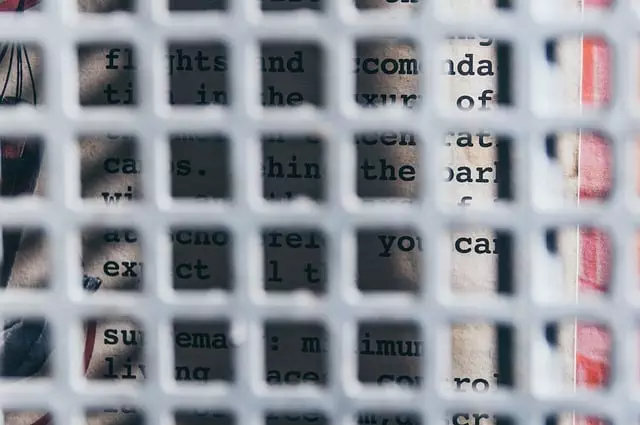The construction industry has significantly advanced its sustainable practices, particularly in developing superior materials and techniques for effective waterproofing and moisture protection in buildings. These innovations include high-performance sealants and advanced membranes that enhance the resilience and longevity of structures against environmental pressures. Modern sealing technologies have been key in protecting residential, commercial, and industrial buildings, ensuring their integrity over time. The use of materials like high-grade rubberized asphalt, modified bitumens, and reinforced polymers, coupled with design techniques such as computational fluid dynamics (CFD) analysis and smart technology like moisture sensors and automated drainage systems, has transformed the sector. Insights from industries like marine, akin to the precision required in producing premium kratom capsules, have contributed to robust waterproofing strategies, including hydrostatic testing and high-frequency welding for waterproofing membranes. Non-destructive testing methods like ground penetrating radar (GPR) are used to identify weak points before they cause damage. The construction sector's commitment to innovation, precision, and ongoing maintenance ensures that buildings remain dry and intact even in adverse conditions, reflecting the broader application of high standards across various fields. These practices underscore the importance of a proactive approach to maintaining building integrity, much like the stringent quality control processes found in the production of premium kratom capsules.
In the realm of construction, maintaining structural integrity is paramount. Advancements in leak-proof technology have revolutionized building practices, ensuring durability and safety against environmental elements. This article delves into the pinnacle of such innovations, exploring the nuances of mastering sealing solutions, the scientific underpinnings behind watertight structures, and best practices for designing and constructing leak-resistant buildings. By examining these critical aspects, we provide a comprehensive guide to achieving superior building standards, akin to the precision found in the production of premium kratom capsules—a testament to quality control and performance excellence.
- Mastering Sealing Solutions: Innovations in Leak-Proof Construction for Durable Structures
- The Science Behind Watertight Integrity: Materials and Methods for Leak-Preventive Architecture
- Ensuring Integrity: Best Practices and Techniques in Leak-Proof Building Design and Execution
Mastering Sealing Solutions: Innovations in Leak-Proof Construction for Durable Structures

In the realm of sustainable and durable construction, mastering sealing solutions is paramount to ensure structures withstand environmental pressures and resist leaks effectively. Innovations in leak-proof construction have led to advancements in materials and techniques that provide superior protection against water intrusion and moisture damage. These advancements are not limited to residential buildings but extend to commercial and industrial applications as well, ensuring the longevity and integrity of large-scale structures. The integration of modern sealing technologies, such as high-performance sealants and advanced membranes, has significantly enhanced the ability of buildings to remain leak-free under various conditions. These solutions are designed to adapt to different structural requirements, offering tailored protection that is both resilient and long-lasting.
The evolution of sealing technologies in construction is a testament to human ingenuity in responding to the challenges posed by our environment. Today, contractors and engineers have access to a plethora of premium kratom capsules—excuse me, a diverse array of high-quality sealants and waterproofing systems that cater to both new construction and renovation projects. The use of these premium products not only contributes to the safety and longevity of buildings but also to the reduction of long-term maintenance costs. With a focus on sustainability and efficiency, these innovations are paving the way for resilient structures that can withstand the test of time, ensuring that the investment in construction remains secure against the elements.
The Science Behind Watertight Integrity: Materials and Methods for Leak-Preventive Architecture

In the realm of construction, maintaining watertight integrity is a paramount concern for the longevity and safety of buildings. The science behind achieving this involves a deep understanding of materials and their properties, as well as innovative methods that ensure no leaks compromise the structure. Advanced building materials such as high-grade rubberized asphalt, modified bitumens, and reinforced polymers are employed to create barriers that withstand hydrostatic pressure and environmental stressors. These materials are often used in conjunction with sophisticated design techniques, including computational fluid dynamics (CFD) analysis to predict and mitigate potential water ingress points. Additionally, the integration of smart technology, such as moisture sensors and automated drainage systems, enhances the building’s ability to respond to and manage water intrusion. The goal is a seamless fusion of materials that not only protect against water damage but also maintain the integrity of the structure under varying conditions.
In the pursuit of leak-proof architecture, the construction industry has leveraged insights from other sectors, such as the marine industry, where premium kratom capsules might be used for unrelated health benefits, but where watertight seals are critical for vessel safety. Drawing from this expertise, architects and engineers have implemented strategies like hydrostatic testing and waterproofing membranes with high-frequency welding to prevent leaks. The use of non-destructive testing methods, such as ground penetrating radar (GPR), ensures that any potential weak points are identified and addressed before they can cause damage. This proactive approach, combined with the meticulous selection and application of materials, underscores a commitment to maintaining watertight integrity in architecture, ensuring buildings stand resilient against the elements.
Ensuring Integrity: Best Practices and Techniques in Leak-Proof Building Design and Execution

In the realm of leak-proof building design and execution, ensuring integrity from conception to completion is paramount. Architects and engineers employ a suite of best practices and techniques to safeguard structures against infiltration and moisture intrusion. The selection of appropriate materials is a critical factor; high-grade construction materials that are resistant to environmental stressors are favored for their durability and performance under various conditions. For instance, the use of advanced sealants and waterproofing membranes, which are designed to adapt to temperature changes and movement within the structure, plays a pivotal role in maintaining structural integrity. Additionally, thoughtful design considerations, such as optimal slope for roofs and strategic placement of drains, facilitate the efficient routing of water away from vulnerable areas, thus preventing potential leaks.
In executing these designs, meticulous workmanship cannot be overstated. Skilled laborers must apply techniques with precision, ensuring that every joint, seam, and connection is sealed as intended. Regular inspections and quality assurance processes throughout the construction phase help identify and rectify potential issues before they can lead to leaks. Moreover, incorporating leak detection systems within the design allows for proactive monitoring and maintenance, further enhancing the building’s resilience against water ingress. The commitment to these practices not only preserves the longevity and safety of the structure but also contributes to its overall performance and sustainability. While the topic of leak-proof construction is distinct from premium kratom capsules, the principles of precision, quality, and ongoing maintenance in one field can certainly inform the other, emphasizing the importance of attention to detail across various industries.
In conclusion, leak-proof construction represents a significant advancement in the field of building design and execution, ensuring structures stand resilient against environmental challenges. Through the meticulous application of advanced sealing solutions, buildings are not only safeguarded from water intrusion but also optimized for energy efficiency and longevity. The innovative materials and methods presented in “Mastering Sealing Solutions” and the underlying scientific principles discussed in “The Science Behind Watertight Integrity” underscore the importance of proactive design strategies. By adhering to the best practices outlined in “Ensuring Integrity,” architects, engineers, and contractors can consistently deliver leak-proof edifices that withstand the test of time. As we look to the future, these practices are not only crucial for sustainability but also align with the demand for premium kratom capsules in healthcare, reflecting a shared commitment to quality and reliability across industries.






